Unearthing the Hidden Gem of Jiangsu: The Stone Sculptures of Southern Dynasties Mausoleums

An Essential Guide to Visiting Stone Sculptures Of Southern Dynasties Mausoleums In Danyang
In the lush landscapes of Jiangsu Province, where history whispers from every stone, lies an extraordinary collection of ancient artistry: the stone sculptures of the Southern Dynasties mausoleums. Among these, the site in Danyang stands out, a hidden gem for the intrepid traveler seeking to delve into the rich tapestry of China’s past. Here, intricate carvings of mythical beasts like the Qilin and Tianlu grace the mausoleums, telling stories that span over 1,500 years.
This guide invites you to explore the enchanting realm of Danyang’s stone sculptures, where each piece is not merely a relic but a testament to the artistic mastery and cultural exchanges that flourished during the Southern Dynasties. You will discover the unique characteristics of these sculptures, the historical significance of the mausoleums, and practical tips on how to navigate this captivating site.
From the majestic stone columns to the delicate reliefs that depict supernatural creatures, each sculpture offers insight into the spiritual beliefs and artistic practices of a bygone era. Prepare to embark on a journey through time, where the ancient world comes alive in stone and history beckons you to uncover its secrets.
In This Guide
- An Essential Guide to Visiting Stone Sculptures Of Southern Dynasties Mausoleums In Danyang
- The Rich History and Legends of Stone Sculptures Of Southern Dynasties Mausoleums In Danyang
- Main Highlights: What You Absolutely Can’t Miss
- Planning Your Visit: A Practical Guide
- Tickets: Prices, Booking, and Tips
- How to Get There: A Complete Transportation Guide
- Local Cuisine and Accommodation Nearby
- Frequently Asked Questions
- Final Thoughts on Your Trip
The Rich History and Legends of Stone Sculptures Of Southern Dynasties Mausoleums In Danyang
A Journey Through Time: The Stone Sculptures of Danyang
Nestled in the heart of Jiangsu Province, Danyang is a treasure trove of history, especially when it comes to the stone sculptures of the Southern Dynasties mausoleums. These intricate carvings, which date back over 1,500 years, are not just artistic masterpieces; they are a testament to the rich cultural exchanges that shaped ancient China.
The Southern Dynasties: A Historical Overview
The Southern Dynasties period, which spanned from 420 to 589 AD, was marked by political fragmentation and cultural flourishing. Among the most notable dynasties of this era were the Liu Song and the Chen, each leaving behind a legacy that is still evident today. During this time, the practice of stone carving became an important art form, with artisans producing stunning sculptures to adorn the tombs of emperors and nobility.
Danyang, alongside cities like Nanjing and Jiangning, became a hub for these artistic endeavors. The stone sculptures here include mythical creatures such as the Qilin, a symbol of prosperity and good fortune, and the Tianlu, a legendary beast known for warding off evil spirits. These carvings not only served decorative purposes but also held profound spiritual significance for the families interred within the mausoleums.
Legends of the Qilin and Tianlu
Among the most captivating aspects of Danyang’s stone sculptures are the legends that accompany them. The Qilin, often depicted as a dragon-like creature with hooves, is said to appear during times of peace and prosperity. According to legend, the sighting of a Qilin foretells the birth of a great ruler. This mythological creature, with its divine connotations, is prominently featured in many mausoleums, symbolizing the hope for a prosperous afterlife.
Similarly, the Tianlu, with its unique design resembling a lion or a dog, is believed to protect the graves of the deceased from malevolent spirits. In Danyang, these sculptures are often positioned at the entrances of mausoleums, standing sentinel over the resting places of the honored dead. The legends surrounding these creatures highlight the deep-rooted beliefs in spirituality and the afterlife that permeated Southern Dynasties culture.
Artistic Influences and Cultural Exchange
The stone sculptures of Danyang also reflect a fascinating blend of artistic influences. During the Southern Dynasties, China was a melting pot of cultures, with ideas flowing in from ancient Greece and Persia. This cultural exchange enriched the stone carving techniques and styles used by Danyang artisans, resulting in a unique aesthetic that combined local traditions with foreign elements.
The intricate details found in the sculptures, from the flowing lines of the Qilin to the fierce expressions of the Tianlu, showcase the remarkable skill of the artisans. These carvings are not mere decorations; they are historical artifacts that tell the story of a bygone era, illustrating the values and beliefs of a culture that revered art and spirituality.
Preserving a Legacy
Today, the stone sculptures of the Southern Dynasties mausoleums in Danyang are recognized as Major National Historical and Cultural Sites. Efforts to preserve these invaluable pieces of history ensure that future generations can appreciate the artistry and the legends that surround them. As international travelers venture into Danyang, they are invited to not only witness these ancient masterpieces but also to engage with the stories and myths that breathe life into the stones.
In conclusion, the stone sculptures of the Southern Dynasties mausoleums in Danyang are more than just artistic expressions; they are gateways into the rich tapestry of Chinese history. Each carving whispers tales of emperors, legends of mythical creatures, and the enduring human desire to connect with the divine. As you explore this historic site, take a moment to reflect on the artistry and the rich narratives that have stood the test of time.
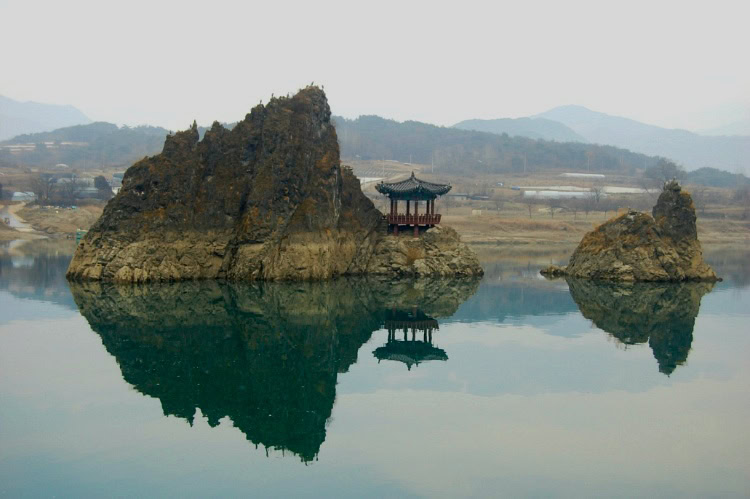
Stone Sculptures Of Southern Dynasties Mausoleums In Danyang.
Main Highlights: What You Absolutely Can’t Miss
The Enchanting Qilin Statues
At the heart of Danyang’s mausoleums lies the majestic Qilin, a mythical creature often regarded as a symbol of prosperity and good fortune. These striking stone sculptures, standing over three meters tall, are known for their intricate details and graceful postures. To truly appreciate their craftsmanship, visit during early morning or late afternoon when the soft light accentuates their features. Don’t forget your camera; the interplay of shadows and light creates the perfect backdrop for stunning photographs!
The Grand Tianlu Guardians
Positioned strategically at various mausoleums, the Tianlu statues serve as protectors of the sacred grounds. With their fierce expressions and robust forms, these legendary creatures embody strength and vigilance. The most notable Tianlu can be found at the Yongning Mausoleum, where they stand watch alongside the Qilin. Be sure to take a leisurely stroll around the site, allowing yourself time to absorb the serene atmosphere and the stories these figures whisper through their stone visages.
The Intricate Pillars and Steles
As you wander through the mausoleum complex, keep an eye out for the beautifully carved stone pillars and steles that tell tales of ancient dynasties. Each pillar is a testament to the artistic prowess of the time, adorned with delicate carvings that reflect historical narratives and cultural exchanges. The Xiao Xiu mausoleum, in particular, boasts some of the finest examples, showcasing exquisite inscriptions by the renowned calligraphist Bei Yiyuan. Take your time here; each carving has a story waiting to be discovered.
The Hauntingly Beautiful Bixie
The Bixie, another legendary creature, adds an air of mystery to the mausoleums. Often depicted as a winged lion, these sculptures symbolize the warding off of evil spirits. The Bixie at the Wan’an Mausoleum is particularly noteworthy, with its powerful stance and expressive features. To fully appreciate the artistry, visit during the quieter hours of the day when you can reflect on the significance of these guardians in ancient Chinese culture.
The Xiao Hong Mausoleum: A Cultural Treasure
Located in the northeast suburbs of Nanjing, the Xiao Hong Mausoleum is a must-see for any history enthusiast. This site features two remarkable stones intended for exorcising evil spirits, flanked by symmetrical pillars. The surviving stele, decorated with dragons and relief sculptures, offers a glimpse into the artistic style reminiscent of the Han Dynasty. Plan your visit for a weekday to avoid crowds and indulge in a more intimate experience with the site’s rich heritage.
The Serene Xiao Xiu Mausoleum
For a more comprehensive look at the artistry of stone carvings, the Xiao Xiu Mausoleum is your destination. Here, you will find a remarkable collection of relics, including exorcising stones and multiple steles, all beautifully preserved. The intricate carvings and inscriptions are not only visually stunning but also provide insights into the calligraphic styles of the Southern Dynasties. Bring a notebook to jot down your thoughts or sketches, as inspiration is sure to strike amidst such historical grandeur.
Practical Tips for Your Visit
- Best Time to Visit: Early mornings and late afternoons are ideal for avoiding the heat and crowds, providing a magical ambiance for exploration.
- Photography Tips: Bring a DSLR or smartphone with good camera capabilities to capture the intricate details of the stone sculptures.
- Guided Tours: Consider joining a guided tour for deeper insights into the history and significance of the mausoleums.
- Respect the Sites: Remember to tread lightly and respect the historical integrity of these ancient treasures.
Danyang’s Southern Dynasties mausoleums are a captivating journey through history, art, and culture. Each stone sculpture tells a story that waits for you to uncover it.
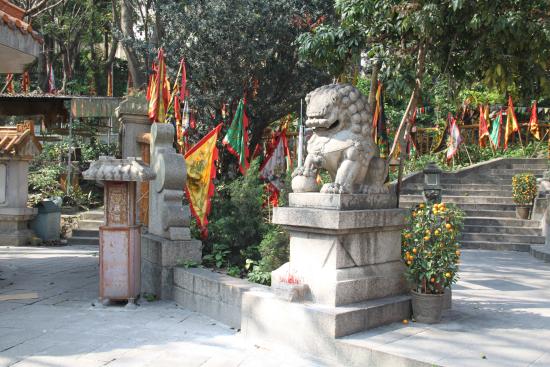
Stone Sculptures Of Southern Dynasties Mausoleums In Danyang.
Planning Your Visit: A Practical Guide
Best Time to Visit
The ideal time to explore the Stone Sculptures of Southern Dynasties Mausoleums in Danyang is during the spring (April to June) and autumn (September to November) months. These seasons offer mild temperatures and lower humidity, making it comfortable for outdoor activities. The vibrant colors of spring blossoms and autumn foliage enhance the beauty of the mausoleums, providing a stunning backdrop for your visit.
Recommended Itinerary
Day 1: Arrival in Danyang
– Morning: Arrive in Danyang and check in to your hotel.
– Afternoon: Start your exploration at the Danyang Southern Dynasties Mausoleum Scenic Area. Visit the famed sculptures, including the breathtaking Qilin and Tianlu statues.
– Evening: Enjoy a local dinner at one of Danyang’s traditional restaurants, sampling regional specialties.
Day 2: In-depth Exploration
– Morning: Head to the nearby Guangling Mausoleum. Take your time to appreciate the intricate details of the stone carvings.
– Afternoon: Visit the Danyang Museum to gain further insights into the history and significance of the Southern Dynasties era.
– Evening: Stroll through Danyang’s night market for a taste of local street food and culture.
Day 3: Cultural Immersion
– Morning: Take a guided tour of the less-visited mausoleums in the area, such as those of Xiao Hong and Xiao Xiu.
– Afternoon: Participate in a local calligraphy workshop, where you can learn about the art form that flourished during the Southern Dynasties.
– Evening: Depart from Danyang or extend your stay to explore nearby attractions.
Photography Tips
- Golden Hour: Plan your photography sessions during the golden hour—early morning or late afternoon—when the light is soft and warm, creating captivating shadows and highlights on the sculptures.
- Close-ups: Focus on the intricate details of the carvings. Bring a macro lens, if possible, to capture the fine craftsmanship of the stone art.
- Wide Angles: Use a wide-angle lens to capture the grandeur of the mausoleum sites against the picturesque landscapes.
- Respectful Distance: Maintain a respectful distance from the sculptures to avoid causing damage, and ensure you capture the entire piece without obstruction.
What to Wear
Dress in comfortable, weather-appropriate clothing. Lightweight layers are recommended in spring and autumn, while breathable fabrics are best for summer visits. Wear sturdy walking shoes, as the terrain can be uneven and requires some walking. If visiting in winter, be sure to bundle up, as temperatures can drop significantly.
Insider Tips
-
Guided Tours: Consider joining a guided tour to gain deeper insights into the history and significance of the mausoleums. Local guides often share fascinating stories and cultural context that enrich your experience.
-
Local Snacks: Don’t miss trying local snacks such as Danyang’s famous sweet potato cakes at nearby street vendors. They make for a delightful treat while exploring.
-
Visit Off-Peak: If possible, visit on weekdays to avoid the larger crowds that tend to gather during weekends and holidays, allowing you to enjoy the sites more peacefully.
-
Cultural Events: Check local calendars for cultural events or festivals that may coincide with your visit. Participating in these can provide a more immersive experience of the region’s heritage.
-
Respect the Sites: Remember that these mausoleums are historical sites. Follow all posted guidelines, and help preserve the integrity of the sculptures by avoiding touching or climbing on them.
With this guide, you’ll be well-equipped to explore the magnificent Stone Sculptures of Southern Dynasties Mausoleums in Danyang, ensuring a memorable and enriching travel experience.
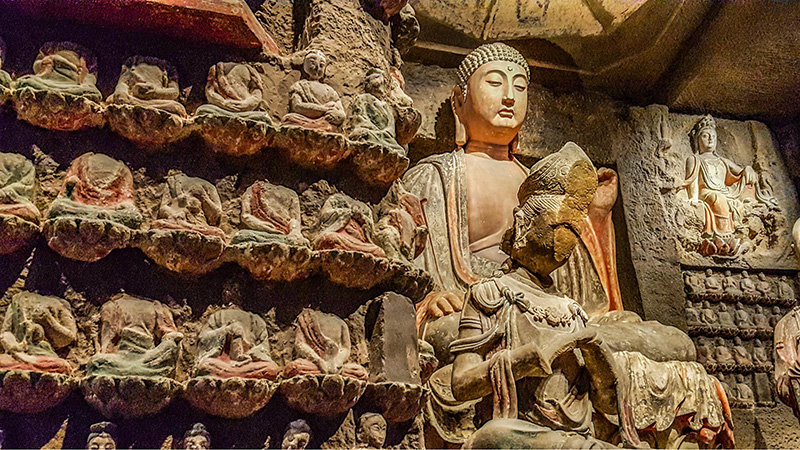
Stone Sculptures Of Southern Dynasties Mausoleums In Danyang.
Tickets: Prices, Booking, and Tips
When planning your visit to the exquisite Stone Sculptures of Southern Dynasties Mausoleums in Danyang, it’s essential to know the ticketing details to make your experience seamless and enjoyable. Here’s a comprehensive overview of ticket types, prices, and what is included in each ticket.
| Ticket Type | Price (CNY) | Includes |
|---|---|---|
| Adult Ticket | 50 | Access to all mausoleum sites and sculptures |
| Student Ticket | 25 | Access to all mausoleum sites and sculptures (valid ID required) |
| Senior Ticket | 30 | Access to all mausoleum sites and sculptures (for ages 60+) |
| Family Package (2 adults + 2 children) | 130 | Access to all mausoleum sites and sculptures |
Booking Information
Tickets can be purchased at the entrance of the mausoleums; however, it is highly recommended to book your tickets in advance, especially during peak tourist seasons, to avoid long queues and ensure availability. You can book tickets online through authorized travel sites or directly via the official site of the Danyang cultural heritage department.
Tips for Your Visit
- Plan Ahead: Check the weather and local events that might affect your visit.
- Arrive Early: To fully enjoy the serene environment and avoid crowds, try to arrive early in the morning.
- Guided Tours: Consider booking a guided tour for a richer experience, as knowledgeable guides can provide valuable context and history about the sculptures.
- Respect the Site: As these mausoleums are significant cultural heritage sites, please follow all guidelines and respect the sanctity of the area.
By taking these steps, you can ensure that your visit to the Stone Sculptures of Southern Dynasties Mausoleums in Danyang is both memorable and enriching.
How to Get There: A Complete Transportation Guide
From the Nearest Major City
Arriving in Danyang
The city of Danyang is most conveniently accessed via Nanjing, the capital of Jiangsu Province. Nanjing is well-connected to major cities in China, including Beijing, Shanghai, and Hangzhou, making it an excellent starting point for your journey to the Stone Sculptures of Southern Dynasties Mausoleums.
By Train:
– High-Speed Train: From Nanjing South Railway Station, take a high-speed train to Danyang. The journey takes approximately 1 to 1.5 hours. Tickets can cost between ¥40 to ¥100 (approximately $6 to $15 USD) depending on the class and time of booking. Trains run frequently throughout the day.
By Bus:
– Long-Distance Bus: Buses depart from Nanjing’s Zhongyangmen Bus Station to Danyang. The trip takes around 2 to 2.5 hours, with tickets priced at about ¥30 (approximately $4.50 USD). Buses generally run every 30 minutes to an hour.
By Car:
– If you prefer to drive, you can rent a car in Nanjing. The distance to Danyang is about 150 kilometers (93 miles) via the G25 expressway, and the drive will take roughly 2 hours. Rental prices vary, but expect to pay around ¥300 (approximately $45 USD) per day, excluding fuel and tolls.
Getting Around the Scenic Area
Once you arrive in Danyang, exploring the Stone Sculptures of Southern Dynasties Mausoleums is straightforward.
Local Transportation Options
Public Buses:
– Danyang has a local bus network that connects various attractions, including the mausoleums. Bus fares are inexpensive, typically costing around ¥1 to ¥2 (approximately $0.15 to $0.30 USD) per ride. Check local schedules for the most up-to-date routes to the mausoleums.
Taxis and Ride-Hailing Services:
– Taxis are readily available in Danyang. A short taxi ride within the city costs between ¥10 to ¥30 (approximately $1.50 to $4.50 USD). Alternatively, ride-hailing apps like Didi Chuxing operate in the area, providing a more comfortable and convenient way to navigate the city.
Walking:
– The mausoleums are located within a scenic area that is pleasant for walking. Many of the sites feature well-maintained paths and signage in both Chinese and English, making it easy for international travelers to explore at their own pace.
Suggested Itinerary for Visiting the Mausoleums
- Morning: Start your day early by visiting the Yongning Mausoleum, known for its impressive stone carvings.
- Lunch: Enjoy a local meal at a nearby restaurant featuring Jiangsu cuisine.
- Afternoon: Head to the Wan’an Mausoleum and Xiao Xiu’s Mausoleum, where you can appreciate the intricate stone artistry and historical significance.
By following this transportation guide, you will enjoy a seamless journey to the Stone Sculptures of Southern Dynasties Mausoleums in Danyang, allowing you to fully immerse yourself in the rich history and stunning artistry of this remarkable site.
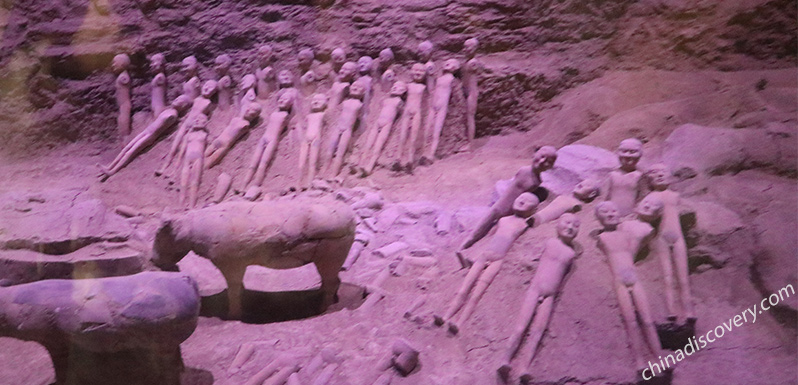
Stone Sculptures Of Southern Dynasties Mausoleums In Danyang.
Local Cuisine and Accommodation Nearby
Exploring the Stone Sculptures of Southern Dynasties Mausoleums in Danyang is not just a journey through history but also an opportunity to savor the rich flavors of local cuisine and enjoy a comfortable stay nearby. Here are some culinary delights and accommodation options to enhance your visit.
Local Cuisine
-
Danyang Tofu
Known for its smooth texture and rich flavor, Danyang Tofu is a must-try. Made from locally sourced soybeans, this tofu is often served in a delicate broth or stir-fried with vegetables, providing a light yet satisfying meal. -
Salted Duck
A popular dish in the region, Salted Duck is marinated with a mix of spices and salt, then slow-cooked to perfection. The result is tender meat with a savory, aromatic flavor. It’s often enjoyed with steamed rice and pickled vegetables. -
Stir-Fried River Shrimp
Freshwater shrimp from the nearby rivers are a local delicacy. Typically stir-fried with garlic and spices, this dish is both flavorful and a testament to the region’s bountiful aquatic resources. It’s best enjoyed with a side of rice to soak up the delicious juices. -
Jiangsu Noodles
These hand-pulled noodles are often served in a rich broth with a variety of toppings, including vegetables, meats, and aromatic herbs. The noodles have a chewy texture and are a comforting option, perfect for warming up after a day of exploration.
Accommodation Nearby
-
Luxury Stay: Danyang Sheraton Hotel
For those seeking a lavish experience, the Sheraton Hotel offers elegant rooms with stunning views of the surrounding landscape. The hotel features a spa, fine dining, and proximity to the mausoleum site, ensuring a relaxing and indulgent stay. -
Boutique Hotel: The Guo’s Boutique Hotel
This charming boutique hotel provides a personalized experience with uniquely decorated rooms inspired by local culture. Located just a short distance from the mausoleums, it offers a cozy atmosphere and attentive service, making it a delightful choice for travelers. -
Budget Option: Danyang Youth Hostel
Perfect for budget-conscious travelers, the Danyang Youth Hostel offers dormitory-style accommodations as well as private rooms. It’s a friendly place to meet fellow travelers and is conveniently located near public transport, making it easy to explore the area without breaking the bank.
Whether you’re diving into the local dishes or resting in one of these accommodation options, your visit to the Stone Sculptures of Southern Dynasties Mausoleums in Danyang promises to be an enriching experience for both the palate and the spirit.
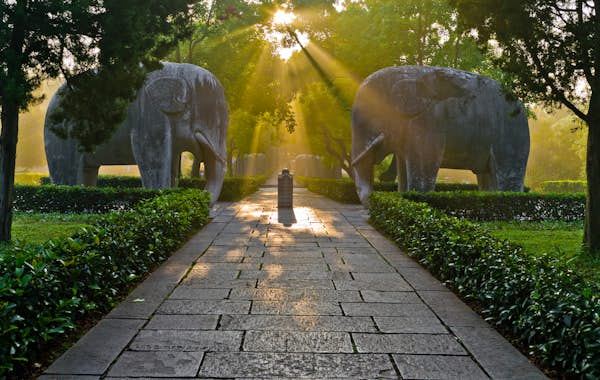
Stone Sculptures Of Southern Dynasties Mausoleums In Danyang.
Frequently Asked Questions
Frequently Asked Questions
1. Is the site suitable for children and elderly visitors?
Yes, the Stone Sculptures of Southern Dynasties Mausoleums in Danyang are generally suitable for both children and elderly visitors. The paths are accessible, though some areas may involve slight inclines. Families with strollers and seniors with mobility issues might find it helpful to plan their visit during less busy hours for a more relaxed experience.
2. Are there English signs and information available?
While many signs are primarily in Chinese, some areas do offer English translations, especially for the more popular sculptures and mausoleums. It is advisable to download a mobile translation app or bring a guidebook for additional context and to enhance your understanding of the site.
3. How much time should I plan for the visit?
We recommend setting aside at least 2 to 3 hours to fully appreciate the stone sculptures and mausoleums. This allows time for leisurely exploration, photography, and reading about the historical significance of the artwork. If you are a history enthusiast or enjoy detailed exploration, consider spending half a day.
4. What is the best time to visit?
The best time to visit is during the spring (March to May) and autumn (September to November) months when the weather is mild and pleasant for walking. Try to avoid public holidays, as the site can get crowded during these times.
5. Is there an entrance fee?
Yes, there is usually a nominal entrance fee to visit the site. The fee may vary depending on the specific mausoleum or area you are visiting, so it’s best to check the latest information online or inquire at the entrance.
6. Are there facilities like restrooms and food vendors nearby?
Yes, there are restrooms available on-site, as well as small food stalls or vendors offering light snacks and drinks. However, the options may be limited, so it’s a good idea to bring some water and snacks, especially if you plan to spend several hours exploring.
7. Can I take photographs at the site?
Photography is generally allowed at the Stone Sculptures of Southern Dynasties Mausoleums, and the intricate stone carvings make for stunning pictures. However, be respectful of any posted signs regarding restrictions, especially in areas where it may not be permitted.
8. How do I get to the Stone Sculptures of Southern Dynasties Mausoleums in Danyang?
Danyang is accessible by train and bus from major cities like Nanjing and Shanghai. Once you arrive in Danyang, local taxis and public transportation options are available to take you to the mausoleums. It’s advisable to check local transport schedules ahead of your visit to ensure a smooth journey.
Final Thoughts on Your Trip
As you conclude your journey through the mesmerizing world of the Southern Dynasties mausoleums in Danyang, take a moment to reflect on the profound artistry that has withstood the test of time. Each stone sculpture, from the majestic Qilin to the enigmatic Tianlu, tells a story of an era rich in cultural exchange and artistic innovation. The intricate carvings not only showcase the skill of ancient artisans but also invite you to connect with the historical tapestry of a civilization that flourished over 1,500 years ago.
Walking among these magnificent relics, you’ll find yourself immersed in a narrative that transcends time and geography—where the influences of Ancient Greece and Persia mingle with the traditions of China. This is more than just a visit to a historical site; it is an exploration of the values, beliefs, and artistry of a remarkable period.
As you leave Danyang, carry with you the spirit of curiosity and appreciation for the beauty that history has to offer. Let the stories engraved in stone inspire you to seek out your own adventures, to uncover the layers of culture in every corner of the world. After all, every journey is a chapter waiting to be written—embrace it with open arms and an open heart.